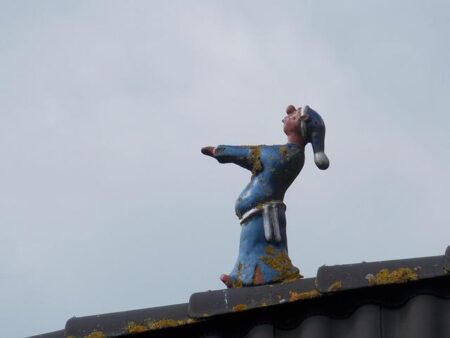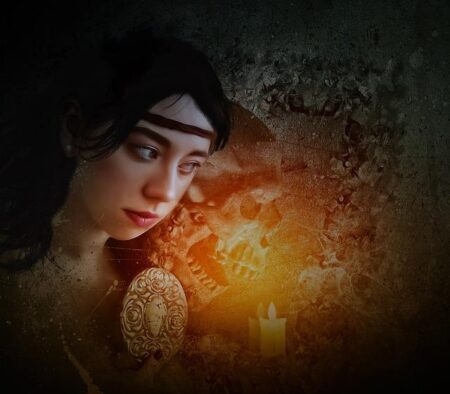In a striking convergence of art and innovation, the legendary Pablo Picasso ventured beyond the canvas, wielding light as his new medium in a groundbreaking photographic experiment. Captured in an iconic image that continues to captivate audiences, PicassoŌĆÖs ŌĆślight drawingsŌĆÖ not only challenged traditional boundaries of artistic expression but also illuminated a novel collaboration between artist and photographer. This article delves into the story behind the famous photo featured on life.com, exploring how PicassoŌĆÖs inventive use of light painting redefined visual art and left an indelible mark on the creative world.
Pablo Picasso’s Innovative Use of Light Painting Captured in Historic Photo
In 1949, Pablo Picasso, already a towering figure in the art world, ventured into uncharted territory with an avant-garde technique that combined photography and performance. Utilizing a small electric light, Picasso executed spontaneous sketches in mid-air, all captured by photographer Gjon Mili using long-exposure photography. This groundbreaking approach not only immortalized Picasso’s dynamic artistic process but also redefined the boundaries of visual expression. The photo captures the ephemeral nature of creativity ŌĆö a swirling dance of light forming abstract shapes against the darkened backdrop, mirroring the artist’s innovative spirit.
Key aspects that made this experiment revolutionary include:
- Integration of Light and Motion: Though light painting was experimental, PicassoŌĆÖs use brought an emotive, painterly quality to this technical method.
- Collaboration Across Mediums: The synergy between MiliŌĆÖs photographic expertise and PicassoŌĆÖs artistic genius created a new genre of art documentation.
- Breaking Tradition: This photo shattered conventional definitions of ŌĆ£drawingŌĆØ and ŌĆ£painting,ŌĆØ illustrating modernist tendencies toward multimedia and the ephemeral.
| Aspect | Impact |
|---|---|
| Light as a Brush | Turned intangible illumination into an expressive, graphic medium |
| Long-Exposure Photography | Captured movement over time, revealing the artŌĆÖs creative process |
| Performance Element | Elevated drawing to theatrical expression, blending art and action |
The Creative Collaboration Behind the Iconic Picasso Light Drawing
In 1949, a remarkable creative partnership unfolded between Pablo Picasso and photographer Gjon Mili, which forever transformed the boundaries of art and photography. Using MiliŌĆÖs innovative light painting technique, Picasso was able to ŌĆ£drawŌĆØ in midair with a small electric light, while the camera captured the glowing strokes in long exposure. This fusion of PicassoŌĆÖs artistic genius and MiliŌĆÖs technical expertise resulted in an image that transcended traditional portraiture, merging motion, light, and the ephemeral nature of creativity into one unforgettable frame.
Behind the simplicity of the glowing lines lies a complex dance of timing and precision. The process involved:
- Long-exposure photography: allowing light trails to be captured as continuous strokes.
- PicassoŌĆÖs fluid hand movements: carefully choreographed to create recognizable shapes.
- Intense collaboration: constant communication between artist and photographer to refine each shot.
This collaboration not only exemplified innovative cross-disciplinary art but also symbolized the synergy between modern technology and timeless creativity, inspiring countless future explorations in experimental photography and visual storytelling.
Techniques and Equipment That Made Picasso’s Light Sketch Possible
PicassoŌĆÖs groundbreaking light sketch was made possible through a blend of pioneering photographic techniques and simple yet innovative equipment. Utilizing long-exposure photography, artist Gjon Mili captured the fluid trails of light Picasso drew in the air with a small, battery-powered flashlight. This technique, requiring a darkened studio environment, allowed the cameraŌĆÖs sensor to gather light over an extended period, effectively transforming each movement into a vivid, continuous line across the frame. The collaboration between artist and photographer was crucial, as PicassoŌĆÖs swift, deliberate gestures relied on precise timing coordinated with the cameraŌĆÖs prolonged shutter opening.
The setup included essential tools that were ahead of its time, yet minimalistic by todayŌĆÖs standards. Key components included:
- Focal-plane camera: Equipped with a modified shutter to accommodate exposures lasting up to 30 seconds or longer.
- Portable flashlight: Used by Picasso to ŌĆ£drawŌĆØ luminous forms in mid-air.
- Dark studio space: To maximize contrast and prevent stray light from interfering.
- Tripod: Ensured camera stability during long exposures.
| Component | Function | Impact on Final Image |
|---|---|---|
| Long-exposure shutter | Captures continuous light movement | Creates flowing light trails |
| Flashlight | Tool for drawing in air | Generates vivid, glowing shapes |
| Dark studio | Prevents unwanted light contamination | Enhances image contrast |
| Camera tripod | Maintains camera stability | Sharp, clear light lines without blur |
Understanding the Artistic and Cultural Impact of Picasso’s Light Drawings
Pablo Picasso’s foray into light drawings was a groundbreaking intersection of traditional artistry and modern technology that challenged the boundaries of visual expression. Through the lens of Gjon Mili, a pioneering photographer, Picasso transformed fleeting beams of light into tangible works of art, illustrating the transient nature of creativity itself. His intricate light sketches, captured over a series of long-exposure photographs, do more than merely document motionŌĆöthey convey emotion, imagination, and the innovative spirit that defined the 20th century. This collaboration underscored how photography could elevate art beyond static forms, embracing ephemerality as a new medium.
The cultural ripple effect of these light drawings reshaped contemporary perceptions about artistic techniques and narrative possibilities. It introduced audiences worldwide to the concept that art could be both a performance and a photograph, blending physical action with photographic permanence. Key impacts include:
- Inspiration for performance art: Melding light manipulation with live creation encouraged a new genre of artistic performances.
- Expansion of photographic scope: Pushed photographers to explore more experimental, time-based imagery.
- Cross-disciplinary dialogues: Triggered collaborations between painters, dancers, and photographers, enriching cultural dialogue.
| Aspect | Before PicassoŌĆÖs Light Drawings | After PicassoŌĆÖs Light Drawings |
|---|---|---|
| Artistic Medium | Static paint on canvas | Dynamic light and photography |
| Perception | Traditional art forms | Experimental, multimedia expressions |
| Audience Engagement | Passive observation | Interactive and experiential |
Key Takeaways
In revisiting the story behind Pablo PicassoŌĆÖs innovative light drawings, life.com offers a compelling glimpse into a moment where art and technology converged to redefine creative expression. This iconic photograph not only captures the genius of PicassoŌĆÖs imagination but also marks a pioneering collaboration that expanded the boundaries of artistic mediums. As the legacy of these light drawings continues to inspire, it serves as a reminder of the enduring power of experimentation and vision in the world of art.



